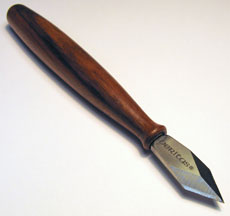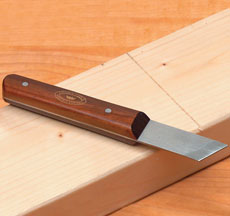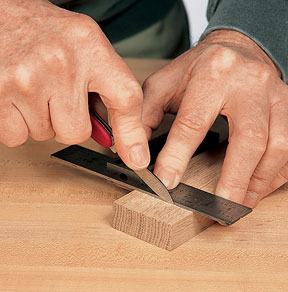Using a Marking Knife
Marking knives offer the most accurate means to scribe a layout line. They also cut through the wood fibers, which often leads to a cleaner cut. So why don't more woodworkers use them?
Using a Marking Knife

Ever have this happen? You've marked out a woodworking joint using a pencil. As you've worked, the pencil has worn down, and your markup lines, while never truly that thin, have gotten a bit wider as you worked. Now you move on to cutting out that joint, and you are struck by a moment of panic ... which side of the line should I cut to? Should the pencil line disappear after the cut? Should I just cut right to the edge of the line, leaving it intact and in view? The difference between those two options might remove or leave behind as much as 1/16 of an inch of material! These are not small details.

But if you had used a marking knife instead of a pencil, you would have saved that moment of panic and known exactly where to cut. In addition, by using a marking knife, you often gain the benefit of fewer chip outs at the cut line.
What Type of Knife Should I Use?
There are several options on the market that you can choose from. (You can even make your own knife by grinding a used-up file into a knife. A small mill-basterd file is perfect for this. Hand tool guru Ian Kirby uses a Swiss Army knife to mark his joints . He likes the rounded end on the knife, which, in his experience, delivers a smoother cut. Others like pointed, bevel-edged knives. They feel that the flat back of the knife held against a ruler or straightedge will give them the most accurate effect.
With feedback like that, it is clear that personal preference is one of the key factors behind which knife you would find most useful.
Inexpensive and Effective
Whichever type of knife you decide to try, the good news is — when compared to a router or band saw — they do not cost a great deal of money. (Although, like your bits and blades, the knife should be well-sharpened when you use it.) And when you think of the benefit to your markup and machining efforts, it just might be time to try this time-tested hand tool technique.
Keep the inspiration coming!
Subscribe to our newsletter for more woodworking tips and tricks




